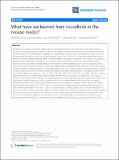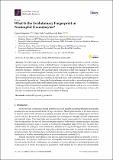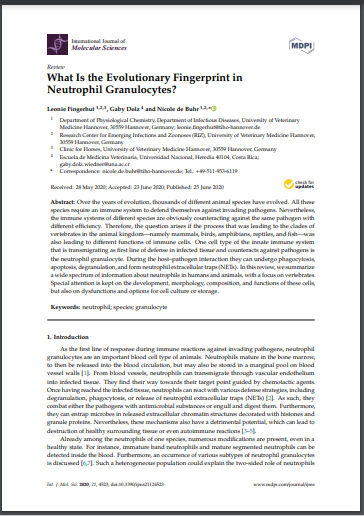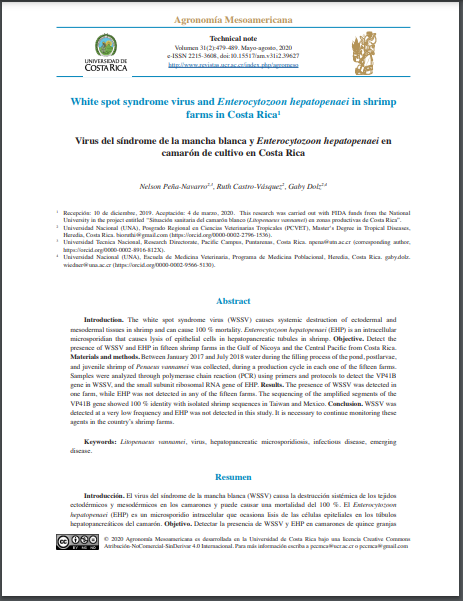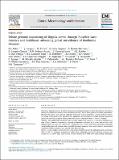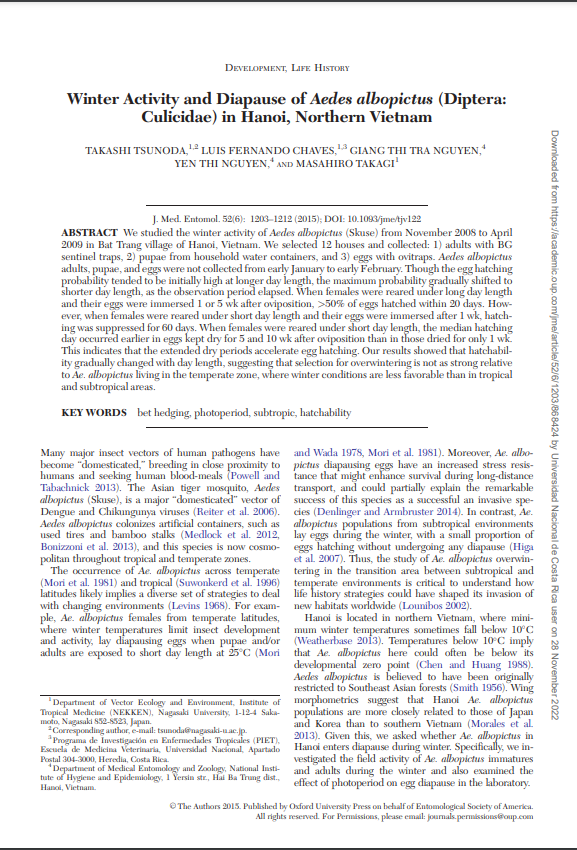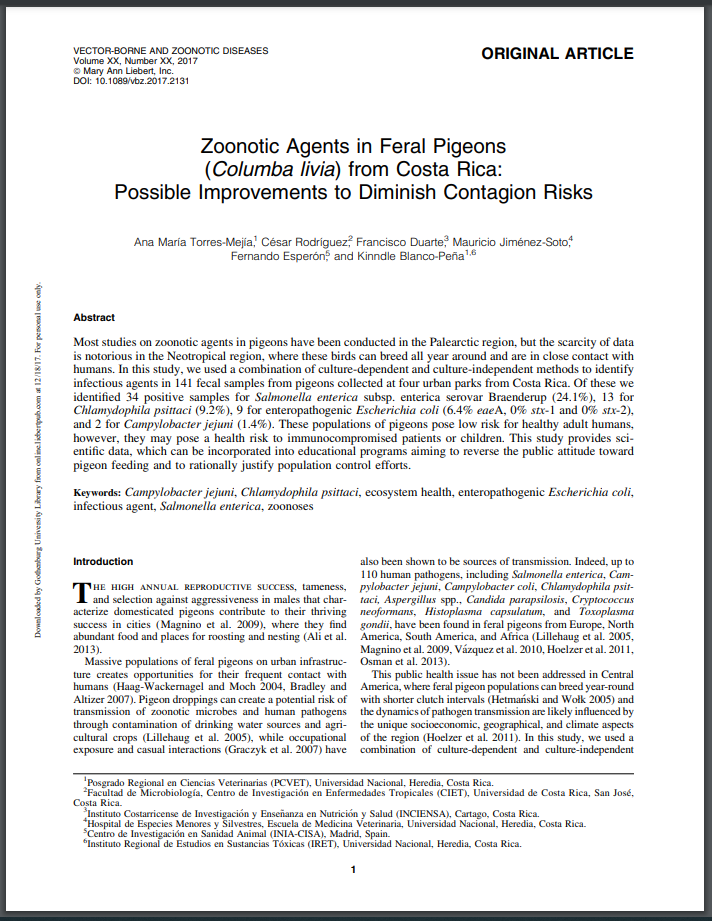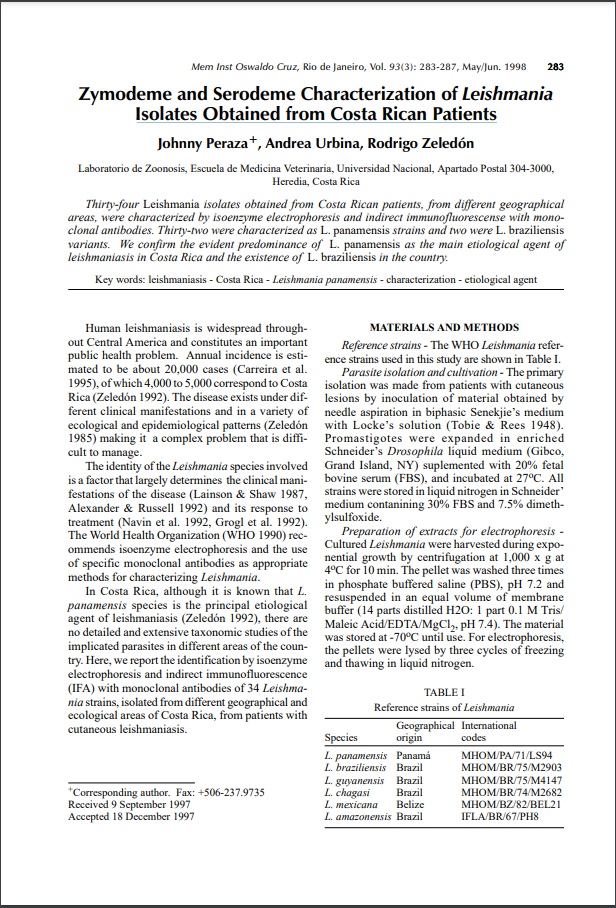Browsing Artículos Científicos by Title
Now showing items 553-560 of 560
-
What have we learned from brucellosis in the mouse model?
(Veterinary Research, 2012)Brucellosis is a zoonosis caused by Brucella species. Brucellosis research in natural hosts is often precluded by practical, economical and ethical reasons and mice are widely used. However, mice are not natural Brucella ... -
What Is the Evolutionary Fingerprint in Neutrophil Granulocytes?
(University of Veterinary Medicine Hannover, Hannover, Germany, 2020-06-25)Over the years of evolution, thousands of di erent animal species have evolved. All these species require an immune system to defend themselves against invading pathogens. Nevertheless, the immune systems of di erent ... -
What is the evolutionary fingerprint in neutrophil granulocytes?
(MDPI AG, 2020-06-25)Over the years of evolution, thousands of different animal species have evolved. All these species require an immune system to defend themselves against invading pathogens. Nevertheless, the immune systems of different ... -
White spot syndrome virus and Enterocytozoon hepatopenaei in shrimp farms in Costa Rica
(Universidad de Costa Rica, 2020-03-04)Introduction. The white spot syndrome virus (WSSV) causes systemic destruction of ectodermal and mesodermal tissues in shrimp and can cause 100 % mortality. Enterocytozoon hepatopenaei (EHP) is an intracellular ... -
Whole genome sequencing of Shigella sonnei through PulseNet Latin America and Caribbean: advancing global surveillance of foodborne illnesses
(Clinical Microbiology and infection, 2017-11)Objectives: Shigella sonnei is a globally important diarrhoeal pathogen tracked through the surveillance network PulseNet Latin America and Caribbean (PNLA&C), which participates in PulseNet International. PNLA&C laboratories ... -
Winter activity and diapause of Aedes albopictus (Diptera: Culicidae) in Hanoi, Northern Vietnam
(Oxford University Press on behalf of Entomological Society of America, 2015-08-18)We studied the winter activity of Aedes albopictus (Skuse) from November 2008 to April 2009 in Bat Trang village of Hanoi, Vietnam. We selected 12 houses and collected: 1) adults with BG sentinel traps, 2) pupae from ... -
Zoonotic Agents in Feral Pigeons (Columba livia) from Costa Rica: Possible Improvements to Diminish Contagion Risks
(Mary Ann Liebert, 2018-01)Most studies on zoonotic agents in pigeons have been conducted in the Palearctic region, but the scarcity of data is notorious in the Neotropical region, where these birds can breed all year around and are in close contact ... -
Zymodeme and serodeme characterization of Leishmania Isolates obtained from Costa Rican patients
(Instituto Oswaldo Cruz, 1998-05)Human leishmaniasis is widespread through- out Central America and constitutes an important public health problem. Annual incidence is esti- mated to be about 20,000 cases (Carreira et al. 1995), of which 4,000 to ...

